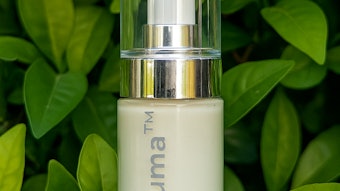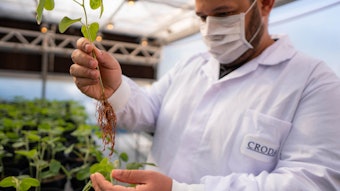
Released today (March 16, 2021), Version 4.0 of the Cradle to Cradle Certified Product Standard is said to be the most ambitious and actionable standard yet for safe, circular, responsibly made products.
The Cradle to Cradle Products Innovation Institute is dedicated to powering a circular economy through products that have a positive impact on people and planet. Through the Cradle to Cradle Certified Products Program, the institute aims to set the global standard for products that are safe, circular and responsibly made. The institute announced the new version of the standard and supporting reference materials are now available at https://www.c2ccertified.org/get-certified/cradle-to-cradle-certified-version-4, and it will begin accepting applications to certify products in July 2021.
“Cradle to Cradle Certified has long been regarded as the most trusted and advanced science-based standard for designing and manufacturing products that maximize health and well-being for people and our planet,” said Institute President and CEO Peter Templeton. “The fourth version of Cradle to Cradle Certified builds on this legacy by equipping brands, retailers, designers and manufacturers with actionable guidance and best practices for choosing safer materials, driving meaningful innovation, and creating products, systems and business models that have a positive impact on humans and the environment today, and in the future.”
Exactly how does the certifier accomplish all this? Rachel Grabenhofer (RG), managing editor of Cosmetics & Toiletries, asked Christina Raab (CR), Ph.D., vice president of strategy and development for the institute. She explained by providing a closer look at the science behind the five key criteria by which products are evaluated.
See related: Green Isn't Enough: Social Progress is the Next Chapter for Naturals
Based in Science
RG: How is the Cradle to Cradle certification based in science? What types of data and sources are used for the key parameters you assess?
CR: First, Cradle to Cradle Certified Version 4.0 is the result of a multi-stakeholder process led by the Institute’s Standards Steering Committee, an independent body composed of technical and scientific subject matter experts, leading manufacturers and other market representatives, as well as the Institute’s Stakeholder Advisory Council and five Technical Advisory Groups.
Certification requirements and key parameters in each of the Standard’s five performance categories (Material Health, Product Circularity, Clean Air and Climate Protection, Water and Soil Stewardship, and Social Fairness) have been developed on the basis of the latest research publications, scientific methodologies, technical developments and leading industry practices. These are outlined in the standard requirements, a draft of which can be found here: https://www.c2ccertified.org/resources/collection-page/draft-cradle-to-cradle-certified-product-standard-version-4.
Cradle to Cradle is a comprehensive, one-standard solution for choosing safer materials, driving meaningful innovation and creating products, systems and business models.
5 Key Sustainability Criteria:
Material Health, Product Circularity, Clean Air/Climate Protection, Water/Soil Stewardship and Social Fairness
RG: How do you benchmark when a material falls within (or not) acceptable specifications?
CR: Parameters are not only specific to each certification category, but also specific to key performance indicators within each category. These have been developed through years of research and engagement with leading green chemistry and materials science led by the institute’s team of scientists in concert with external consultants, technical experts and stakeholders.
In every category, the Cradle to Cradle Certified requirements are structured according to ascending levels of performance, which enables companies to start at any point on their sustainability journey and to then use the requirements as a framework for prioritizing action. This is a big part of the value Cradle to Cradle Certified delivers.
For instance, the Cradle to Cradle Certified Version 4.0 Material Health category includes an assessment methodology for inventorying, evaluating and optimizing chemicals/ingredients in products and packaging to maximize their safety for humans and the environment. Because the requirements are structured by ascending achievement levels for easy benchmarking (Bronze, Silver, Gold, Platinum), companies can begin with inventorying and assessing existing chemicals/ingredients, then identify and enact optimizations to formulations and packaging materials over time that enable even greater levels of certification verification and achievement.
See related: Sustainable, Circular and Aquatic-friendly: L'Oreal Commits to 'Green Science"
Creating a Roadmap
RG: How might product developers use the information you provide to create a "roadmap" for their business? What changes might they make in their product development or sourcing, for example?
CR: Because Cradle to Cradle Certified does encompass all five of the most mission-critical aspects of sustainability performance—again, Material Health, Product Circularity, Clean Air and Climate Protection, Water and Soil Stewardship, and Social Fairness, taken as a whole, the standard provides a uniquely comprehensive and ambitious single roadmap for developing, reformulating/redesigning or innovating products today with tomorrow in mind.
Product developers often use the standard requirements as design guidance during the early stages of product/packaging development. Particularly at the early stages of the product development/redevelopment process, the Material Health and Product Circularity requirements offer a robust blueprint for informing product formulations and design optimizations that often drive innovation and continuous improvement plus ensure both new and re-developed products have positive impact on people and planet now and in the future.
Requirements are structured by ascending achievement levels for easy benchmarking. Companies can begin with inventorying and assessing existing chemicals/ingredients, then identify and enact optimizations to formulations and packaging materials over time.
The changes in product development and sourcing informed by the use of the Cradle to Cradle Certified Product Standard can include changes in sourcing to use ethically sourced ingredients and/or new or different ingredients/materials that are safer and better optimized for human health and the environment; or the implementation of packaging that is recyclable or compostable, plus designed with circularity and reusability in mind.
Promoting Product Certification
RG: How can marketers use your certification to promote products? Do they display a logo on their product packaging, for example? In relation, how aware are consumers of your program and what "cradle to cradle" means?
 CR: The Cradle to Cradle Certified logo is a distinct product mark that can be displayed on the product packaging itself to demonstrate achievement and drive credibility with consumers in an easily recognizable manner.
CR: The Cradle to Cradle Certified logo is a distinct product mark that can be displayed on the product packaging itself to demonstrate achievement and drive credibility with consumers in an easily recognizable manner.Consumer interest in sustainable products and businesses is rapidly increasing, as are purchase decisions driven by credible product sustainability claims. As such, consumer awareness of Cradle to Cradle Certified is also gaining a great deal of momentum, particularly across North America and Europe—notably in the context of the clean beauty movement and consumers’ desire to make responsible product choices that contribute positively to the environment.
Companies and brands in the Cradle to Cradle Certified community include businesses of all sizes with different market reach, consumer focus and followings. This is helping to accelerate recognition of the product mark across diverse demographics.
Differentiation in the Market
RG: How is your program different from other standards that support a circular economy?
CR: It’s important to acknowledge that the way we design and make products today has a very real impact on the world we will inhabit tomorrow. That’s why Cradle to Cradle Certified exists: in order to get to a circular economy, we must do more than focus on circularity alone. This is what sets the Cradle to Cradle Certified Product Standard apart. It is a comprehensive, one-standard solution for choosing safer materials, driving meaningful innovation and creating products, systems and business models that have a positive impact on humans and the environment today and tomorrow.
Where other standards tend to focus on a single industry sector or on a single attribute such as ingredient materials or product circularity, Cradle to Cradle Certified helps companies meet a higher ambition for environmental, social and governance performance. As a result, the standard also offers more than a certification mark: it provides a roadmap for industry transformation and market leadership.
Impact on Packaging
RG: How might product packaging be shaped by your standards?
CR: Product packaging across sectors can be certified separately or certified in conjunction with the product itself. Given the escalating attention focused on sustainable packaging solutions within and beyond the cosmetics sector, the standard is becoming a valuable tool for shaping packaging-specific material innovation and sourcing choices (including post-consumer and renewable content, recyclability and compostability), business models for packaging circularity (reusability, refillability), lightweighting and design for circularity.
Looking ahead, we are starting to see the standard serve as a conduit for collaborative innovation across the value chain, particularly as companies and brands look to be first-to-market with novel solutions for responsible packaging in response to growing consumer pressure.










